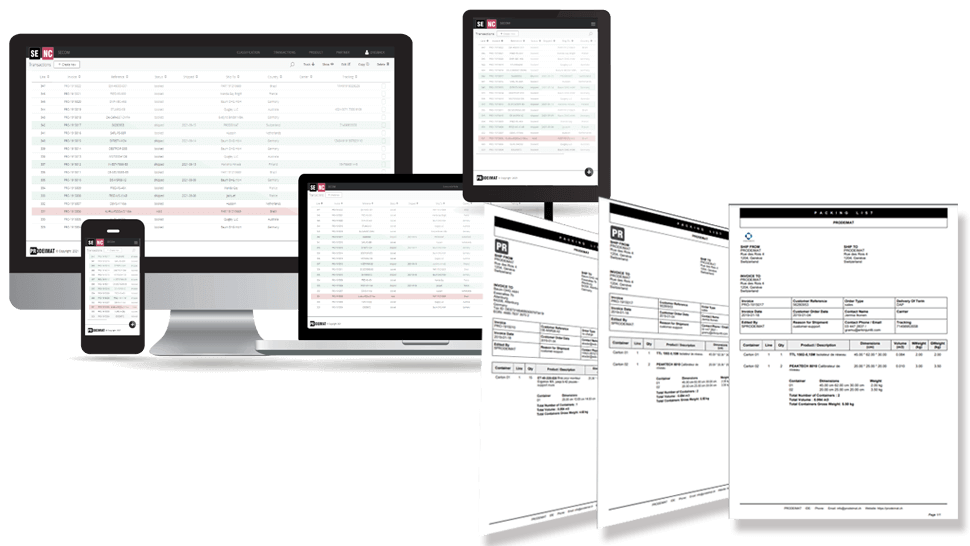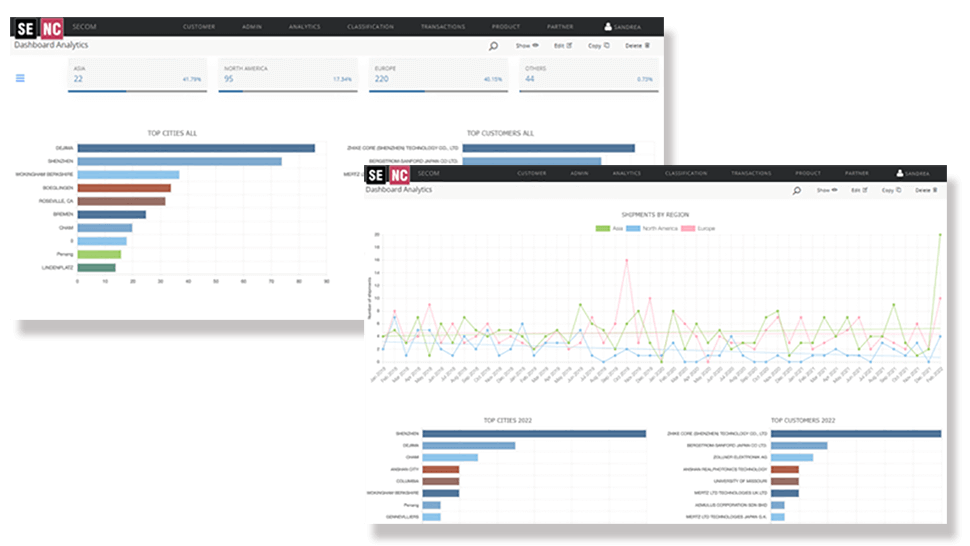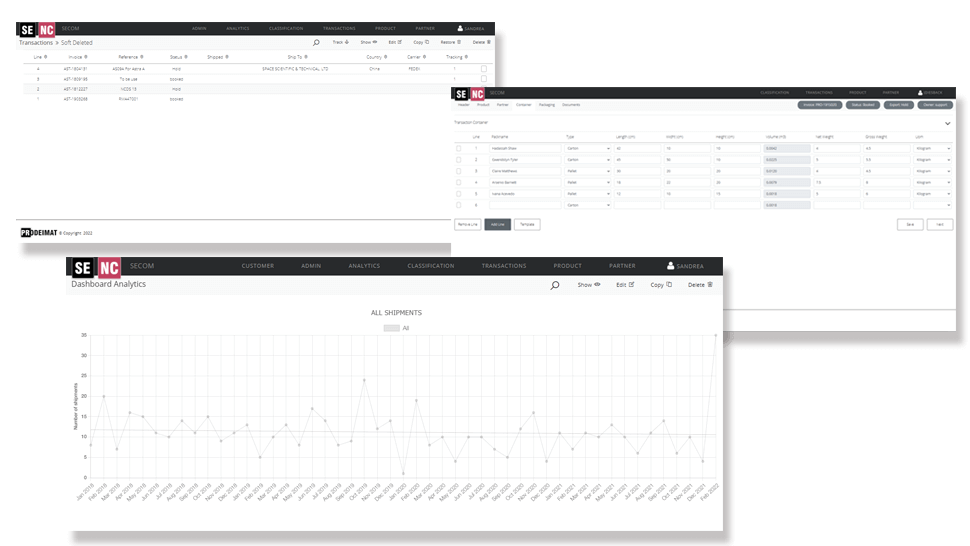Dangerous goods: IMO classification
IMO classification is the denomination that corresponds to the class of dangerous goods at the time of shipment, therefore you will have a greater vigilance to the care and protocols when you want to export.
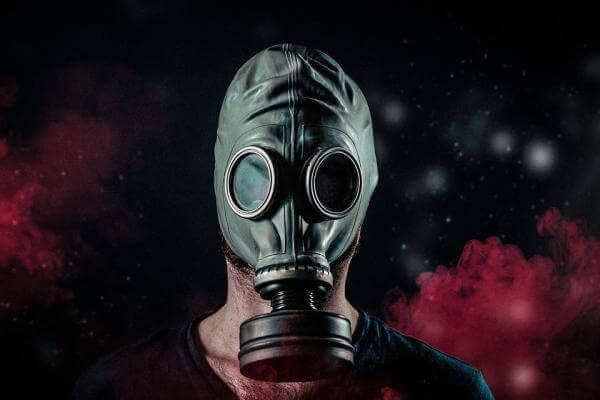
You should know that whenever dangerous goods are transported, a series of protocols should be followed, because any accident could endanger human beings, animals or the environment.
These operations are usually more common than you think. The vessels that transport this type of goods have special containers for this function: They are known as IMO Containers.
According to the International Convention for the Safety of Life at Sea (SOLAS) and the International Convention for the Prevention of Pollution from Ships (MARPOL) the requirement to have the International Maritime Dangerous Goods Code (IMDG) is mandatory as of January 1, 2004.
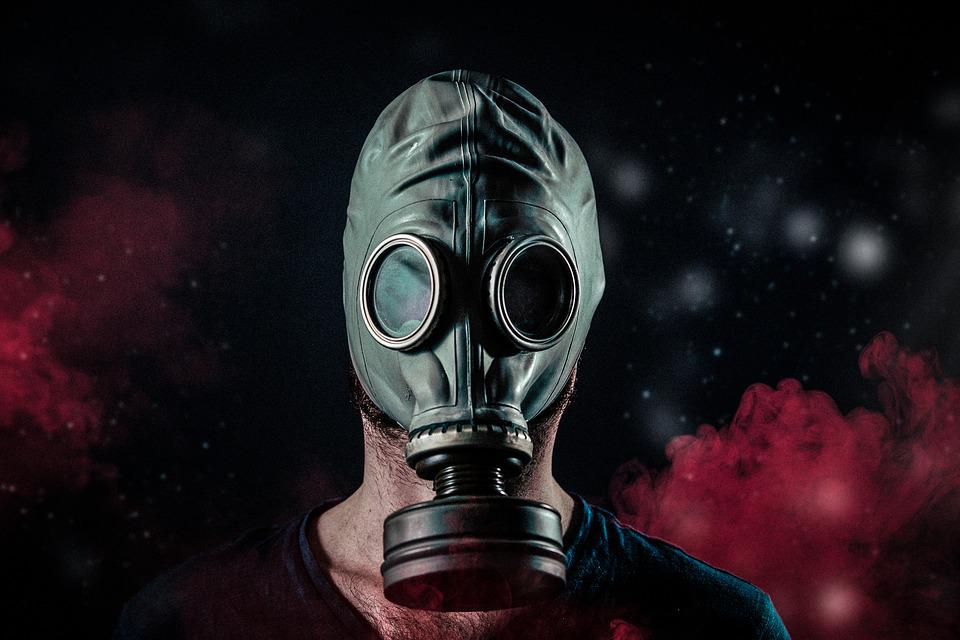
What does IMO classification mean?
The acronym IMO refers to the International Maritime Organization and is used to label products or goods that require special safety measures when handled, stored and transported.
This type of goods are classified in 9 different categories according to their characteristics, but especially to the degree of danger they represent in case of accidents during transportation.
Although maritime vessels are the ones that usually take on this challenge, it also applies to air, rail, road and inland waterway transport.
What commodity is within the Classification (IMO)?
It is a special container inside the vessels to transport dangerous goods, such as: substances or articles that endanger health, safety, property or the environment. And they are included in the list of the International Maritime Organization (IMO).
Roughly speaking, we can say that there are new classes of hazardous substances.
IMO classification class one: Explosives.
Explosives require a small temperature change to trigger a reaction, such as violent shocks, accidents or fire.
These are subdivided according to the risk of:
- Mass explosion
- Projection only
- Slight fire and explosion or slight projection hazard
- Minimal
- Explosive agents
- Very sensitive detonating articles
Class two: Gases
Although it is dangerous to transport gases because their volume under pressure must be reduced in order to save space in transport and storage, they are considered stable at a stable temperature.
These gases are subdivided according to physical or chemical hazard:
- Flammable
- Non-flammable, non-toxic
- Toxic
IMO classification class three: Flammable liquids.
These refer to liquids derived from petroleum, gasoline or kerosene. These liquids are known to be sensitive to heat, but also evaporate if improperly stored.
They are divided according to the packing group of the type:
- I: There are those whose boiling point is below 35°C.
- II: Those with a boiling point above 35°C. And the ignition point below 23°C.
- III: Those with a boiling point above 35°C. Flash point above 23°C.
Class four: Dangerous goods
These are flammable solids that generate spontaneous and dangerous combustion in contact with water:
- Flammable solids, self-reactive materials and solid desensitized explosive materials: Will burn readily, more so than ordinary combustible materials such as wood or paper.
- Substances that may experience spontaneous ignition: They may be solids or liquids. Will ignite spontaneously in contact with oxygen.
- Packing group I. Other materials will burn only when in large quantities.
- Packing Groups II or III will burn for longer periods of time. Depending on classification tests.
- Materials that in contact with water give off flammable gases: These burn due to the effect of the heat of the reaction, therefore they are shipped hermetically sealed to prevent the entry of moisture.
IMO classification class five: Oxidizing substances.
Due to their high oxygen content, they are usually reactive materials. They are classified as:
Oxidizing Substances:
Due to their high oxygen content, they are usually reactive materials. Some oxidizers can be explosive if heated very high, such as ammonium nitrate, mixed with hydrocarbon fuel or such as diesel fuel, used in extractive industries.
Organic peroxides:
These inputs are designed to be reactive for a number of industrial processes, they can be stable but sometimes be explosive. They need to be kept refrigerated to keep them inactive.
Class six: Dangerous goods
Toxic substances:
As the name implies, can do harm to the human body when swallowed, breathed or absorbed through the skin.
Hazardous substances:
Contain microorganisms that cause infectious diseases in humans or animals. And are divided into:
Category A:
Infectious substances that cause fatal diseases such as viruses:
- Ebola
- Hepatitis B
- Lassa
- Rabies
Infectious substances that cause diseases are assigned a number UN 2900 to the viruses they generate:
- African horse sickness
- Hand, foot and mouth disease
- Sheep pox
- Vesicular stomatitis
Category B:
Any other infectious matter not listed above. According to UN No. 3373.
IMO classification class seven: Radioactive
This class of materials contains unstable atoms that spontaneously change their structure, generating an ionizing reaction, depending on the type of radiation and the duration of exposure.
Class eight: Corrosives
These are highly reactive materials with chemical action, which can produce changes. They can be acidic, if they react with metals, or alkaline, which neutralizes acids but generates a lot of heat quickly.
There are strict requirements regarding the transport of these materials, according to the Maritime Transport Regulations (IMDG)
IMO classification class nine: Miscellaneous dangerous substances and articles.
Here are materials and substances that cannot be classified in any other category.
Especially, when it comes to articles that need one or the other active to react such as: self-inflating bags, a compressed gas cylinder, flares, candles, flammable solid materials with heat.
Remember that the IMO Dangerous Goods classification was developed by the United Nations Committee of Experts on the Transport of Dangerous Goods (UN).
And it is essential for operators and agents involved in the shipping process to be aware of the characteristics of the transported material and act according to the protocols.
